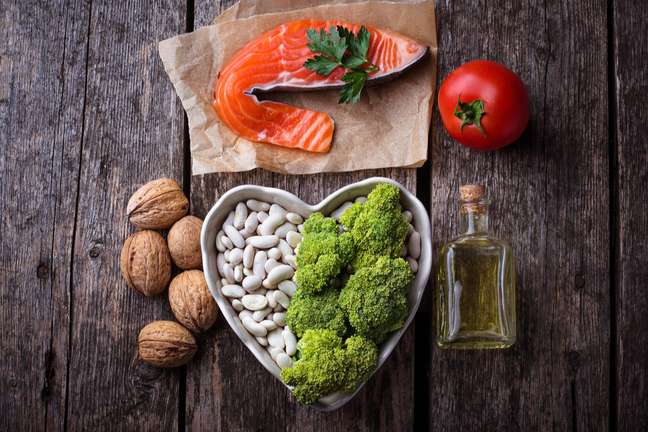Find out which foods can affect HDL and LDL levels and make the right choices
Cholesterol is essential for the body, as it is responsible for all the membranes that surround the cells and supports metabolic processes. It is also necessary for cell growth and regeneration and, in addition to being present in the blood and all tissues, it contributes to the production of sex hormones and cortisol (hormone linked to stress).

The role of food in prevention
Diet plays an important role in preventing and maintaining adequate blood cholesterol levels. “Inadequate food, high in saturated, trans fat, simple carbohydrates and low in fiber can raise cholesterol,” warns Joana Lucyk, Master in Nutrition at UnB.
Good cholesterol protects the body by collecting bad cholesterol stored in the blood vessels to be eliminated by the liver. Bad cholesterol, when present in large quantities in the body, can cause blockage of the arteries – atherosclerosis, responsible for cardiovascular problems such as heart attacks and strokes.
Having healthy habits
Both types of cholesterol can be affected by our lifestyle habits. Good cholesterol, for example, can rise when you exercise or eat certain foods. Bad cholesterol, on the other hand, is increased by factors such as poor diet and being overweight and is usually associated with other risk factors such as diabetes, smoking and high blood pressure.
How Do Fats Affect Cholesterol?
It is important to understand that there are different types of fat and that some are more beneficial than others. Therefore, for a balanced diet, it is necessary to respect the ideal quantities of consumption of each.
“Saturated fats are present in foods of animal origin such as meat, eggs, butter, milk and derivatives. It must complete up to 10% of the total energy in the daily diet. These fats increase the risk of dyslipidemia (high levels of fat in the blood ).) and heart disease and, for this reason, it should be consumed in moderation “, explains nutritionist Gabriela Marcellino.
Unsaturated fats are beneficial for the body, but they should also be consumed in moderate amounts. They are divided into monounsaturated – present in vegetable oils and oil seeds, and polyunsaturated – found in vegetable oils and cold water fish oil. Therefore, it is not recommended to completely exclude fats, but to choose them based on their nutritional quality.
Nutritionist Simone Abreu explains in detail what saturated, unsaturated and trans fats are
Saturated fats
Which is: a type of fat found mainly in products of animal origin and which, at room temperature, is in a solid state.
Where is it: red and white meats (mainly meat fat and poultry rind), whole milk and derivatives (butter, cream, yogurt, cream) and palm oil.
unsaturated fats
Which is: it is found mainly in vegetables. It is liquid at room temperature. There are monounsaturated (with only one carbon double bond) and polyunsaturated (with more than one carbon double bond).
Effects on the body: helps reduce bad cholesterol, triglycerides (a type of fat that, in high levels, can cause coronary heart disease) and blood pressure.
Where is it: olive oil, rapeseed and corn oil, almonds, Brazil nuts, avocado, flaxseed, trout and salmon.
Trans fat
Which is: a type of fat formed by a chemical process (hydrogenation), in which liquid vegetable oils are transformed into a solid fat.
Effects on the body: it does not provide any health benefits. This type of fat increases bad cholesterol and lowers good cholesterol at the same time.
Where is it: margarine, crackers, chips, ice cream and snacks.
Source: Terra
Benjamin Smith is a fashion journalist and author at Gossipify, known for his coverage of the latest fashion trends and industry insights. He writes about clothing, shoes, accessories, and runway shows, providing in-depth analysis and unique perspectives. He’s respected for his ability to spot emerging designers and trends, and for providing practical fashion advice to readers.







